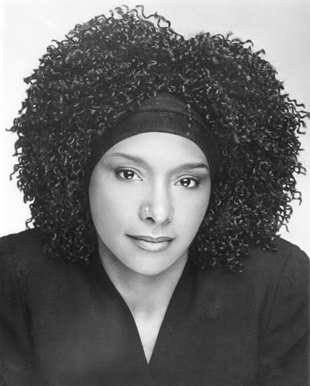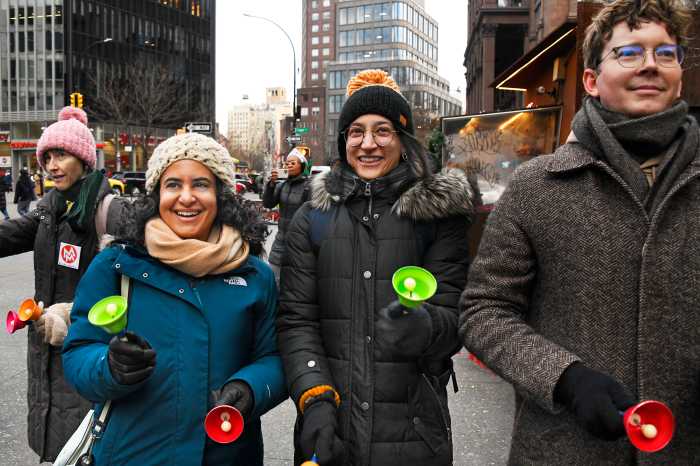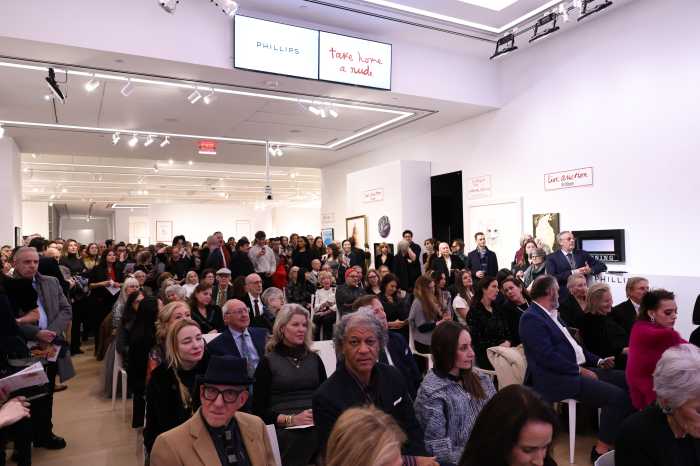By Bonnie Rosenstock
LaLa Brooks, former lead singer of the 1960s girl group The Crystals, refuses to be pigeonholed. Which is partly why we haven’t heard from the youthful, striking 58-year-old recently, except at benefits where she performs for worthy causes. “I’ve been asked to perform many times, but I just don’t want to be locked into the doo-wop and oldies but goodies girl. I want to spread out and be more creative. I dance, sing, act and have done Broadway and movies. I try to take things that expose me as a woman—an older woman, a strong woman,” she asserts.
But on Saturday, March 11 at the Cutting Room, for one show only, Brooks will return to her roots. On the song list, of course, will be her famous signature Crystals hit singles, “Da Doo Ron Ron” and “Then He Kissed Me” from 1963, as well as material that she personally loves. She will be accompanied by the LeBlanc Brothers, a five-piece band, that “plays their butts off,” she says, and on piano, special guest Paul Schaeffer, musical director of the Late Show with David Letterman. “If it works out, fine,” she says confidently. “At this age, I can’t be bothered with the head tripping. I’m not a diva. I don’t have that kind of mentality. I don’t mind saying to the audience I forgot a word because I’m going through menopause, okay? If I’m on stage and start hot flashing, the jacket’s got to come off,” she says with a hearty laugh.
Like so many other great musical talents, Brooks began by singing gospel in church. At age seven she and her siblings—she is the second youngest of eleven children—formed the Little Gospel Tears in their native Brooklyn. At 12, she was discovered in her after school program at P.S. 73 by the mother of one of The Crystals (they already had a hit with “There’s No Other Like My Baby”). The school secretary was passing by the music room when she heard Brooks singing. With one of the five Crystals already set to leave the group, Brooks was tapped to take her place as a lead singer. And so in 1960, at the tender age of 13, the touring began.
The hardest part was playing the segregated South, Brooks recalls. In 1963, the Dick Clark Tour was integrated, with such headliners as the Supremes, the Shirelles, Bobby Rydell and Fabian, to name a few. The white performers stayed at the Sheraton, and the black performers stayed at black motels. “Dick Clark would have to pick us up with the bus on the highway. He was a sweetheart. He felt bad. It made me upset as a teenager because I wasn’t raised that way. My mother never taught us the difference between black and white,” says Brooks.
Brooks’ mother was full-blooded Native American, and her father was black. “I knew she was different when she couldn’t comb my hair,” she recalls, laughing. “She told me to ask a neighbor to do it. I have my father’s kinky hair.”
But Brooks can look back at that era and keep it in perspective. “Racism made me angry, but the anger turned into something positive because I would meet white people who weren’t like that, and people that were black who were negative in their way,” she says.
Getting Her Due
She credits that experience for making her strong. But she stayed out of trouble and harm’s way on tour through a steely resolve rare in someone that age. “I always thought, ‘What would my mother say?’ I thought God was going to punish me. I was afraid of being bad and doing things wrong. I saw lots of people lose their minds, have nervous breakdowns, succumb to drug abuse. I’m not saying that show business was the cause, but it has an effect,” she says. “You can get caught up in it if you don’t have some kind of faith or reserve that makes you pull back. Show business is what it is. It is a business, and it’s a show, and you have to know when to get off the show. If I looked at show business as my whole being, I’d be out there too.”
This was also the era of economic exploitation. Wally Amos, later to become famous for his cookies, came out to collect the revenue for the William Morris Agency. After it passed through the hands of managers and others, the girls received only $75 a week, low even for those days. “But I got a soul and I got spirit,” says the Rock ’n Roll Hall of Famer. “Sometimes money doesn’t mean anything when you wind up a millionaire in rehab.”
Brooks reserves her harshest words for record producer Phil Spector, who milked The Crystals dry. He paid each member a grand total of $1,000 for all their recording work. Moreover, as owner of the Crystals’ name, Spector didn’t always use the entire group or any of them to record “Crystals” songs. While Brooks recorded two of their biggest hits with other singers as the background voices, Darlene Love, who was never a Crystal, recorded lead on “He’s a Rebel” and “He’s Sure the Boy I Love” with studio singers.
Brooks has been in and out of court with Spector’s lawyers for several years. “The law is crooked,” she asserts. “It has a statute of limitations for me, but not for him to continue on stealing. The judges admitted it was wrong and said I would have to take it to legislation. I said, ‘Okay, let’s take it to legislation.’ Every time someone covers our songs, he gets paid. Reissues, compilations, he gets paid. Put down for history if Phil Spector gets off on the murder charge [he is out on bail awaiting trial], this is the first black woman that freed a white man because he took some of my “Da Doo Ron Ron,” “Then He Kissed Me” and the Christmas album money to get out of prison,” she asserts.
But with or without Spector’s money, Brooks acknowledges that she has lived well. She left the Crystals in 1965 to join the original Broadway cast of “Hair” and is the memorable voice behind “Aquarius.” She later appeared in “Two Gentlemen from Verona” with Raul Julia. She has toured with every major recording artist of the 60s and has made recordings or sung with the Neville Brothers, Bobby Womack, Isaac Hayes, Benny King and countless others. She and husband, drummer Idris Muhammad, were married for 35 years before they separated a few years ago (they are still friends); they raised four children and have three grandchildren (the third born just days ago). They lived in England from 1983 to 1990 and Austria from 1990 to 1997, where they both enjoyed successful careers. (Brooks has lived in the East Village since her return.)
Brooks appreciated the European attitude towards music and age. “No matter how old you are, they still love your music. You can be an 80-year-old woman, [and] they would still hire you for some kind of venue. In America, they’d wheel you to a nursing home and tell you to sing for the old people,” she says with a mischievous laugh. This golden Crystal would undoubtedly have the audience rocking in the aisles.
Brooks appears March 11 at the Cutting Room, 19 West 24th Street, from 7:30 to 9 p.m. For more information, call 212-691-1900.








































